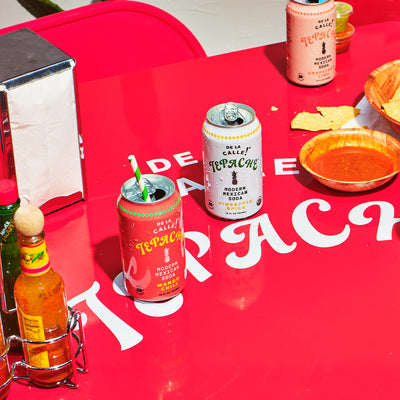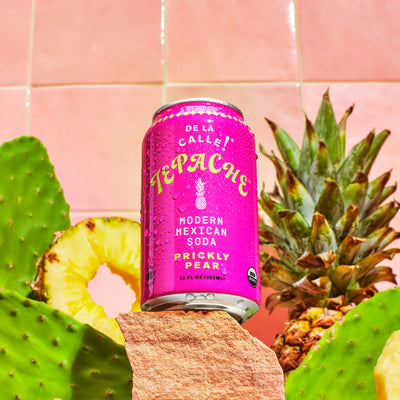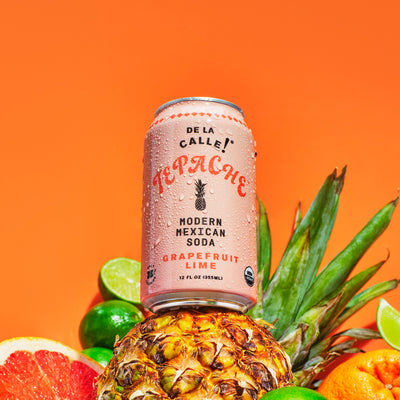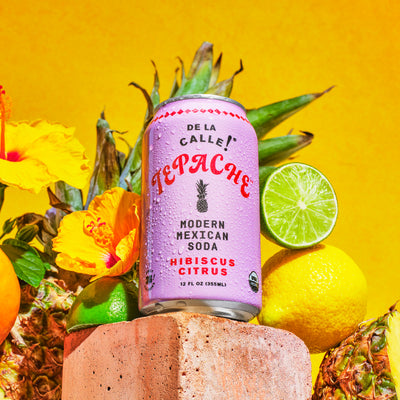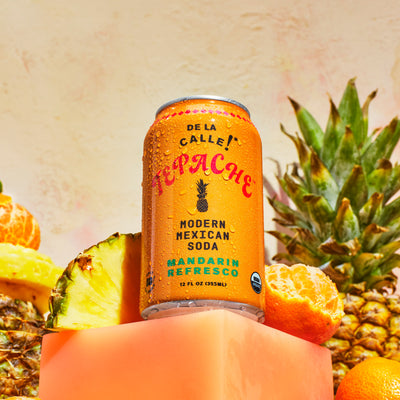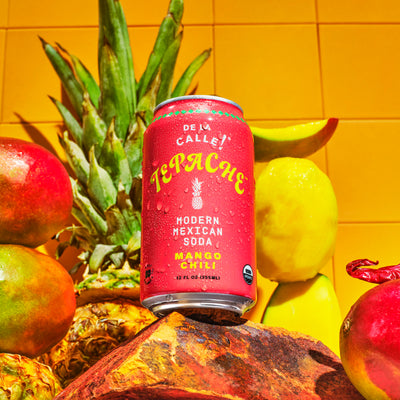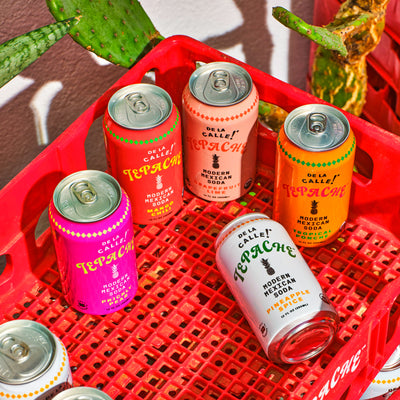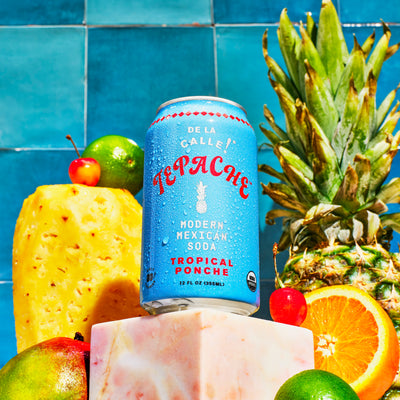Everything You Need to Know About Mexican Street Food

If one of your go-to snacks is a taco or a quesadilla, then you’re already a fan of Mexican street food. Although those two are delicious classics, there are tons of tasty snacks and drinks you can buy on the streets of Mexico. In this article, we’ll tell you everything you need to know about Mexican street food, from the history of this unique culinary culture to the dishes you can’t miss out on.
Overview
It’s said that over 75% of the population of Mexico City eat a meal from the street at least once a week. Street food in Mexico isn’t a trend of a new phenomenon; it’s a way of life. Unlike in the US, where a majority of street food is sold in food trucks, there are several ways street food is sold in Mexico. You can buy street food from a small truck, or you can buy it from the back of a bicycle, a small stall, or a stand set up under an umbrella.
Also different from street food culture in the US is the variety of snacks, meals, and drinks you can buy from street vendors in Mexico. You can get anything from a piece of grilled corn to an entire platter of food from a street vendor in Mexico. Given that street food is such a big part of their culinary culture, there are vendors out at every time of day, selling breakfast, lunch, dinner, and late evening snacks to hungry passersby.
History of Mexican Street Food
Although each street food delicacy has its own unique history in Mexico, the move to street vending in cities is largely linked to the country’s history of industrialization. As Mexico became more industrialized and people flocked to the cities to find work, there was a growing need for quick, cheap meals that workers could have on their lunch break or after their shift.
This dietary need was quickly filled by the tortilla. Given that tortillas are cheap, easy to make in large quantities, and incredibly versatile, people, usually women, started selling them out of stalls in every city.
Women were particularly likely to move to the city because there were light industrial jobs in factories available. The mass migration of women to the cities meant that, for the first time, there was a merging of all the different regional cooking techniques and recipes that Mexico had to offer in the same place. This melding of different culinary traditions on the streets of Mexico City in many ways led to the Mexican cuisine we know and love today.
This move to street vending led to the invention of several tortilla-based dishes we love today. It’s thought that nowadays, the average Mexican family eats about one kilo of tortillas every day. Although the original move to street food started with workers, soon everyone, even housewives and white-collar workers were enjoying at least one meal from the street every week.
History of the Taco
Arguably one of the most famous ways to serve a tortilla is as the base of a taco. Tacos are wildly popular in both Mexico and the US and are a staple of Mexican street food cuisine. That being said, the origins of this beloved dish are somewhat unclear.
What is known about the origins of tacos is that they were first served in the 18th century. The name “taco” is thought to have come from the phrases used by the silver miners. In the silver mines, the word “taco” referred to gunpowder wrapped in paper that they would put into the rock face to excavate the ore. In some ways, a taco as we know it today is reminiscent of the original “tacos” if you think of the tortilla as the paper and the filling as the gunpowder.
The first written record of the taco comes from the end of the 19th century and refers to the food as tacos de minero which translates to “miner’s taco.” Given this name, it’s not hard to imagine that the taco has its origins around the time people started mining for silver in Mexico.
History of the Tamale
Another classic staple of Mexican street food is the tamale. Unlike the taco, which is relatively new to the street food scene, the origins of the tamale can be traced back to 8,000 BC, making it one of the oldest foods still regularly consumed today.
The tamale was part of the cuisine of both the Olmecs and the Toltecs. Although there are no written records of these civilizations, drawings from both civilizations show women making tamales. It’s thought that warriors carried tamales with them when they went to battle or to hunt, and women made them for festivals and religious rituals.
The Aztec and Mayan civilizations took a lot of inspiration culinarily from the Olmecs and the Toltecs. They incorporate tamales into their daily diet, and the Aztecs went so far as to have tamale festivals.
Most Popular Street Foods & Drinks
Now that you know a bit more about the history of Mexican street food, let’s take a look at some of the most popular street foods and drinks that you can find in Mexico.
Tamales
Tamales are one of the most popular breakfast street foods in Mexico. The inside of a tamale, known as the tamal, is made from corn masa (the flour used to make tortillas) wrapped around a filling. The tamal is then placed in a corn husk and steamed, making a soft, delicious snack. Almost every state in Mexico has its own tamale variation, with some of the most famous being: the Oaxacan tamale, corn tamal, dry corn leaf tamale, deep dried tamal, and the guajolota, a bun stuffed with a tamale.
Tacos
As we mentioned, tacos are arguably the most popular street food in Mexico. Every taco starts with a tortilla (usually made from corn) as the base. From there, the tortilla is filled with chick, pork, beef, seafood, or fish. Usually, beans, cheese, rice, cactus, and spring onions are added on top.
You’ll know you’ve found a good taco stand if they have an avocado-based salsa and a salsa made from roasted chiles alongside the standard red and green salsas. You’ll also often find some kind of potatoes, such as French fries or roasted potatoes, at the taco stand.
Tortas
If you’re a sandwich lover, then chances are you’d love a torta. Tortas are sandwiches made from Mexican bread, usually bolillos or teleras, and filled with whatever kind of filling you’d like. One famous type of torta comes from Jalisco and is filled with potato and chorizo and topped with cabbage, sour cream, and cheese.
Tepache
Tepache is a classic drink served on the street in Mexico. Made from fermented pineapple rinds, tepache has a light, bubbly texture and sweet taste which makes it the perfect drink for a hot summer day. Usually, tepache is sold in plastic baggies with a straw so that you can drink it on the go.
Conclusion
The history of Mexican street foods is as varied as the array of foods and drinks that make up this distinct, delicious cuisine. That being said, the emergence of street food culture in Mexico is linked to the country’s history of industrialization. In many ways, street food created a truly cosmopolitan experience because people living in Mexico’s cities who would not be able to afford restaurant dining could suddenly try a multitude of different foods. From tacos to tepache, there’s an endless amount of dishes and drinks to enjoy on the streets of Mexico.
Sources:
Olmec Civilization | National Geographic
Toltec Civilization | World History Encyclopedia
Washington State Department of Health | Health Benefits of Fish

